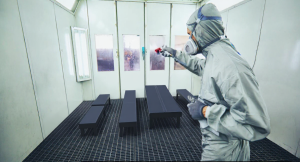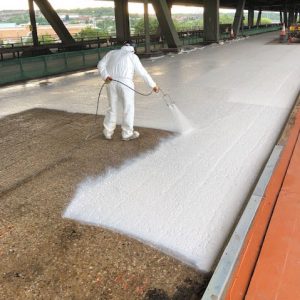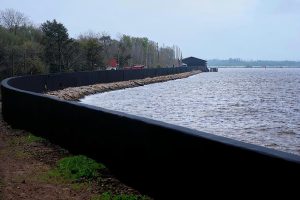A safe room is designed to provide security when everything outside of it becomes uncertain. Whether the threat comes from extreme weather, intrusions, or even blasts, the room’s strength depends on how well every surface holds up under stress. Building a strong safe room requires more than heavy walls and reinforced doors. It requires surface systems that eliminate weak points and help the structure withstand impacts without failing. This is where modern coating technologies, especially polyurea, have become essential.
Why coatings matter in safe rooms
Concrete, steel, and wood remain the standard materials for safe room construction. Each offers distinct strengths, but each also has vulnerabilities. Concrete cracks under tension. Steel rusts when exposed to moisture. Wood weakens when it absorbs water. These weaknesses create risks, because a safe room cannot afford failure at its most critical moment.
Coatings add a protective layer that shields these base materials from both environmental degradation and sudden forces. A coating that bonds tightly and cures into a continuous membrane prevents water intrusion, resists abrasion, and contains fragments if the substrate cracks. For safe rooms, the difference between an untreated wall and a coated one can mean the difference between stability and failure.
Polyurea’s role in reinforcement
Polyurea stands out because of its unique balance of strength and flexibility. When sprayed onto a surface, it cures in seconds to form a seamless, joint-free barrier. Unlike paints or thin films, it does not peel or flake under stress. Instead, it stretches slightly when struck, absorbing energy and reducing the chance of spall or penetration.
In storm-prone regions, polyurea has been tested as a debris-impact liner. In security settings, it has been used as a blast-mitigation layer to contain fragments. In both cases, the coating adds resilience without requiring a complete redesign of the structure. Safe rooms that integrate polyurea benefit from a protective skin that strengthens walls, ceilings, and even entry points.
Durability for long-term readiness
Safe rooms often sit unused for long stretches, but they must remain reliable when called upon. This makes durability a crucial factor. Polyurea resists water, ultraviolet light, and chemicals, so it does not degrade while the safe room waits. It also bonds tightly to irregular shapes and complex junctions, ensuring vents, corners, and transitions between materials remain sealed. This quality removes the vulnerabilities where failure is most likely.
The result is a safe room that requires little maintenance but maintains full protective value. Owners can rely on it not just for the first few years after construction but across decades.
Broader perspectives on safe room coatings
The conversation about coatings is not only about materials but also about philosophy. A safe room must be seen as a complete system, not just a collection of parts. Each surface interacts with the next, and the weakest link determines the outcome. Seamless coatings reinforce the idea that protection should be continuous and adaptable. They integrate strength across every component, giving the entire room greater resilience.
For a deeper exploration of how polyurea has been applied to safe rooms, the article on using polyurea for safe room construction offers insight into the chemistry, applications, and field performance of this technology. It shows why the material has earned its place in projects where failure is not an option.
Conclusion
Safe rooms are built to provide certainty in moments of danger. Their effectiveness depends not only on the thickness of walls but also on the continuity of protection across every surface. Coatings, especially polyurea, provide that continuity. They strengthen concrete, shield steel, and seal wood, creating a barrier that holds under both everyday conditions and extraordinary stress.
The growing use of polyurea in safe room coatings reflects an understanding that resilience is not about resisting force until failure but about adapting to it without losing integrity. By investing in coatings that bond, flex, and endure, builders create safe rooms that live up to their name—spaces where safety is not just intended but assured.






